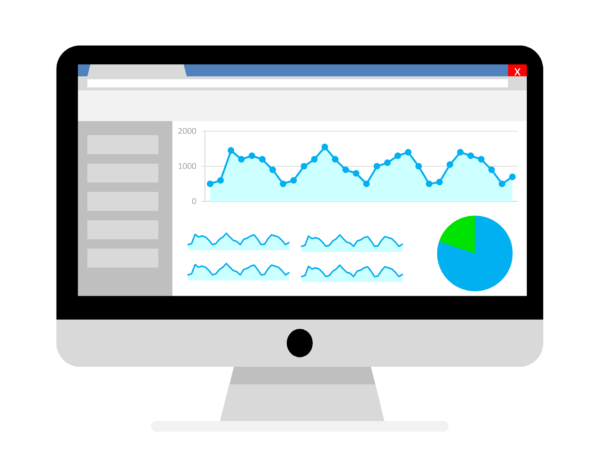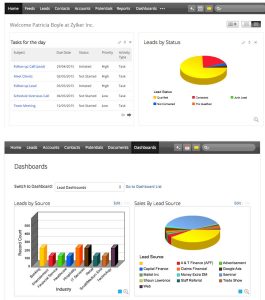— July 14, 2017
If you’re looking to increase your visibility, grow your traffic and boost your profits then Google AdWords is the marketing channel for you. Over recent years Google AdWords has grown in complexity as the targeting options, campaign types and advert formats have expanded to meet the needs of a multi-device world. This added complexity has meant that advertisers are increasingly unsure of the best ways to measure performance and gain insights into how to improve the performance of their campaigns.
In this article, I’ll run through the AdWords metrics that actually matter and how you can measure them to build a successful advertising campaign for your business.
Traffic based metrics
The simplest form of measurement for tracking the performance of an AdWords campaign is using the traffic-based metrics that are available in the standard campaign dashboard. There are lots of metrics that can be measured at the keyword, advert, ad group and campaign level to indicate performance and these include impressions, clicks, click-through rate, quality score and average cost per click.
Metrics that will give you the best idea of how your campaigns are performing are:
Click-through rate (CTR)
Click-through rate is one of the easiest metrics to measure and one that a lot of advertisers place a great deal of importance on. The theory is that the higher your click-through rate is the more relevant your keywords are to searchers. CTR is also one of the factors that determine the quality score of your adverts and ultimately the cost you’ll pay for your clicks.
Quality score
Google’s quality score is used to determine how relevant a keyword, advert and landing page are to a user’s search query. The more relevant and positive the experience the higher the quality score will be. Some of the factors that are used to evaluate quality score include:
- Keyword and advert CTR
- Ad group keyword relevance
- Landing page quality
The higher your CTR and quality score the lower your cost per click will be.
Clicks
Clicks are the easiest metric to see how much traffic keywords in your campaigns are generating. You’ll be able to see which are your most popular keywords, and how many times people click through to your website using them.
While these metrics are useful for getting an overall indication of a campaign’s performance they are not a great way of measuring performance against your business goals as they don’t provide enough information.
What we need is some more information in order to know whether the traffic that our campaigns are generating is actually driving enquiries, sales and phone calls.
Conversion based metrics
In order to get an idea if your AdWords traffic is driving enquiries, generating sales or enticing customers to call, you need to be able to track your conversions. The simplest way of doing this is with Google’s integrated conversion tracking which is easy to set up on the majority of websites. So if you haven’t already done so then you need to get conversion tracking setup as quickly as possible to allow you to start counting the metrics that matter.

By measuring your conversion data you’ll be able to tell how many phone calls, enquiry forms and sales were made from your campaigns and find out what your cost per conversion was for each of these.
Conversion rate
Once you’ve got your conversion tracking in place you’ll be able to see what percentage of people who clicked on your advert completed a trackable conversion such as an enquiry form fill, online purchase or made a call to your business. This metric is helpful for advertisers to see which keywords have the best response rate from clicks on your advert through to enquiry or sale.
Make sure that the traffic that you’re paying for is performing the desired action by measuring your conversion rates on your campaigns. A high conversion rate is what we’re aiming for.
Cost per conversion
Your cost per conversion is an important metric to measure in that it tells you how much each of your conversions is costing your business. One mistake a lot of advertisers make is focusing on a set price for the cost per conversion based on their average customer value but this is not the best route to take.
And while this data is useful in order to help us make a truly informed decision we need to take our metrics a step further to work out how many conversions became paying customers. Just because a campaign is sending through lots of leads with a low cost per conversion doesn’t necessarily mean that it’s your best performing campaign.
Return on investment (ROI) based metrics
For measuring performance against real-life business goals the golden metrics that you’ll want to measure focus on ROI. From campaigns, ad groups, adverts and keywords, by tracking your ROI you’ll be able to see exactly what sales are being made and be able to attribute the value of these to specific keywords and adverts in your campaigns.
Calculating your AdWords ROI
Return on investment is simply the ratio of new profit based on the cost spent to achieve that profit. For AdWords what we want to know is the advertising return on investment and there is a simple formula you can use to work this out:
AdWords ROI = (Total Profit – Advertising Costs / Advertising costs x 100
So for example, if you have a plumbing business and the total revenue generated from your AdWords campaign was £4500 last month, your cost of wages and materials for these jobs was £2500 and your advertising costs on AdWords was £500 then you could work out your AdWords ROI as:
Total Profit = £4500 – £2500 = £2000
So for the calculation, the figures are:
(2000 – 500) / 500 x100 = 300% ROI
Call tracking
For a lot of small to medium businesses calls are one of the primary sources of enquiries and ways that customers are on-boarded. Using a built in AdWords feature advertisers are able to track calls to phone numbers on their websites using a Google forwarding number. Being able to track which calls lead to business, which keyword and advert combinations triggered the call and how much this business is worth are the benefits of call tracking.
Dynamic revenue tracking
For ecommerce websites, you’ll want to make sure that you’re capturing the conversion value for shopping cart transactions in your store. This will then let you set a conversion value for products and get your ROI data directly from Google AdWords. There are a couple of ways to integrate conversion tracking with ecommerce shops and these include modifying the code on your website to send the conversion value to AdWords or by implementing ecommerce tracking in Analytics and then having these imported into AdWords.
Customer lead tracking
Whether you use a CRM system or rely on spreadsheets to log your enquiries, being able to track which of your enquiries led to a customer and the value of that customer will help you see which of your campaigns is the most profitable and delivers a positive ROI for your business.
In summary
All the metrics that we’ve covered are important to help you determine the performance of your business but the bottom line is if your campaigns aren’t delivering a positive ROI then it’s time to make some changes to make them profitable.
Digital & Social Articles on Business 2 Community
(124)
Report Post







